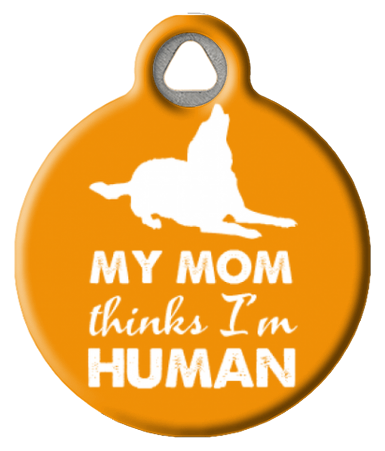The term "fur babies" has become more and more popular the past few years. While some people might think it is simply a cute way to say you love spoiling your furry "children," it turns out the term is actually scientifically accurate.
Fur Babies' Effect on Our Hormones

New research has proven that when dogs gaze into their human's eyes, they stimulate the same hormonal response that bonds us to human infants. The hormone at work is called oxytocin. This hormone is at work during maternal bonding and it plays a role in a human's feelings and actions of trust and selflessness. In humans, research shows that when a mother stares into her baby's eyes, the baby's oxytocin levels rise, causing it to stare into its mother's eyes. Her oxytocin levels then go up and a loving bonding cycle is initiated. It's a positive feedback loop that creates that strong, mother-baby bond, long before the baby is capable of saying, "I love you."

Takefumi Kikusui is an animal behaviorist at Azabu University in Sagamihara, Japan. Kikusui’s studies oxytocin in his lab, so he got to wondering if this bonding cycle was also happening between dogs and their owners. He said, "I love my dogs, and I always feel that they’re more of a partner than a pet. So I started wondering, 'Why are they so close to humans? Why are they connected so tightly to us?'" That thought led to a study that resulted in some very interesting findings.
Kikusui initiated a study in which 30 of his friends and neighbors participated with their pets. Each owner brought his or her animal to the lab and the researchers collected urine samples from both parties. Then they asked the owners to interact with their pets in a room for 30 minutes. Most of the owners spent their time petting and talking to each other. They also spent time looking into each other's eyes. When the 30 minutes was over, the researchers took urine samples again.

The effect of the mutual gazing on both the dogs and their owners was profound. The pairs that spent the most time looking into each other's eyes saw the biggest increases in oxytocin. Both male and female dogs experienced a 130% rise, and both male and female owners a 300% increase.
These results suggest that the way our dogs look at us and the way we look at them causes the same kind of oxytocin based bonding that we experience with our children. This explains why it is easy to feel so close to our "fur babies."
What It All Means

Science.org reports, "Canines seem to understand us in a way that no other animal does. Point at an object, for example, and a dog will look at where you’re pointing—an intuitive reading of our intentions (“I’m trying to show you something”) that confounds our closest relatives: chimpanzees."
Add this to the fact that we have exceptional bonding ability with dogs and some pretty far-reaching implications arise. Could this finding help us understand how and why service dogs can do better work? What about animal bonding for people with autism - can the process be understood more profoundly and used more effectively? Time will tell how the results of Kikusui's findings will be of use in the future. In the meantime, one thing is for sure - according to our hormones and brain, fur babies really are our fuzzy children.








